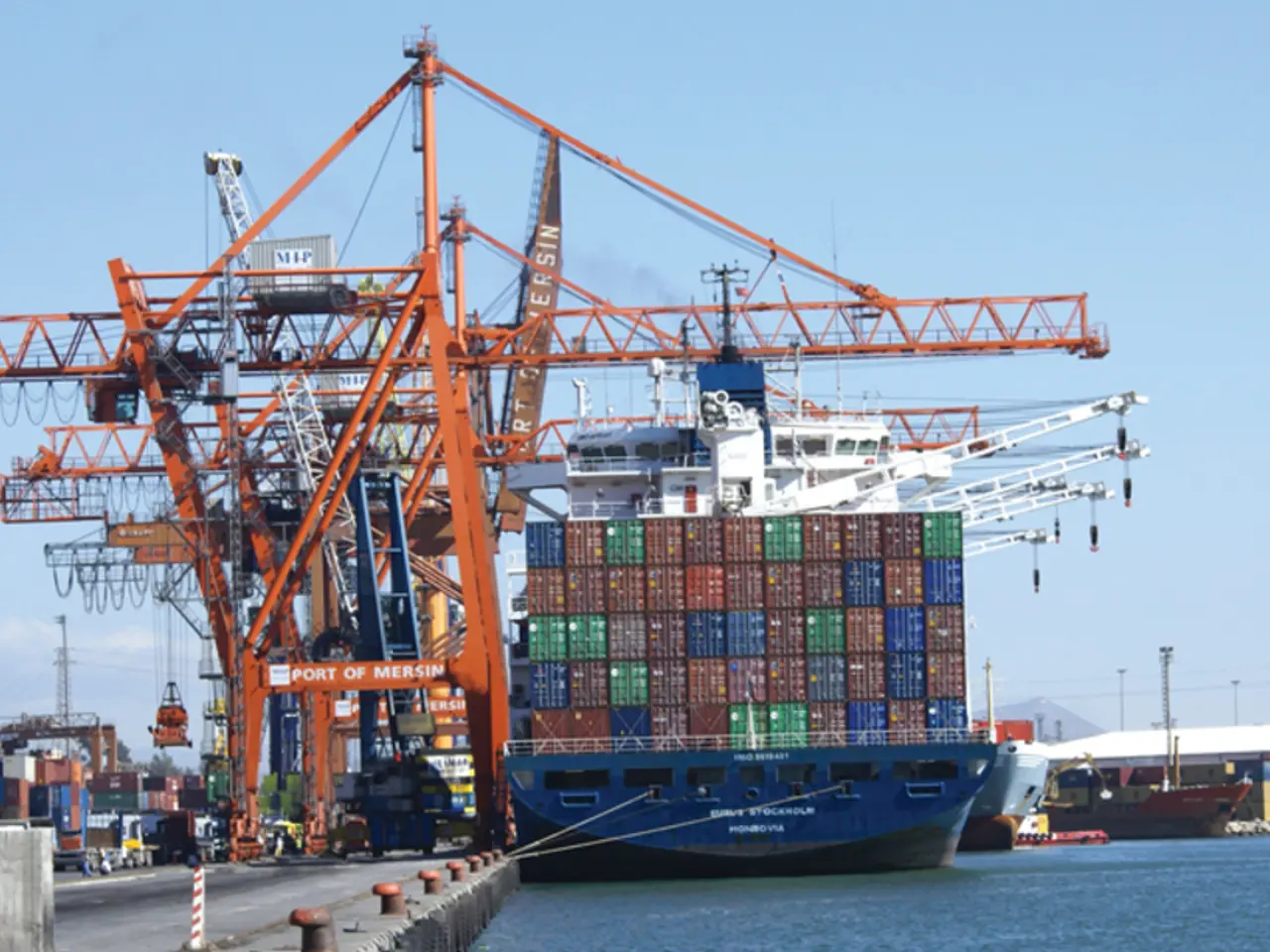Red Sea serves as conduit for Germany's 136 billion euro worth of imports, showcasing its strategic maritime significance.
The Ifo Institute, a renowned economic research organisation, has published a study that underscores the significant geoeconomic implications for Germany linked to critical sea routes. These strategic bottlenecks include the Suez Canal, Bab al-Mandab Strait, Malacca Strait, Taiwan Strait, Strait of Hormuz, and Panama Canal.
The Suez Canal and Red Sea corridor, including the Bab al-Mandab Strait, is the most critical route for Germany, with approximately 10% of its imports passing through it. This route, which supplies various critical raw materials and intermediate goods essential for German industry, represents around €136 billion in trade in 2023. Disruptions, such as missile attacks from Houthi rebels in Yemen, can cause severe consequences, including increased transit times (30%) and freight costs (up to 400%), disrupting supply chains, particularly in the automotive and chemical sectors.
The Malacca Strait is another highly important passage, accounting for around 8.7% of imports. This route links Germany's trade flows with Southeast Asia. Meanwhile, the Taiwan Strait accounts for about 7.1% of German imports, reflecting Germany’s reliance on semiconductor and electronic components from East Asia. Any disruption there could pose a risk to German industrial supply chains.
In contrast, the Strait of Hormuz and Panama Canal are less significant for German foreign trade, with only about 0.4% and 0.5% of imports passing through these routes, respectively. Thus, they pose lower direct geoeconomic risks compared to other chokepoints.
Approximately 50% of Germany’s trade with non-EU countries depends on maritime transportation through these key chokepoints, demonstrating the strategic importance of securing these sea lanes. Geopolitical tensions or blockades in these chokepoints could escalate freight costs, prolong delivery times, induce industrial production delays, and increase carbon emissions due to longer rerouted voyages, impacting Germany’s export-driven economy negatively.
In response, Germany is investing heavily in supply chain resilience, including digital logistics platforms, green infrastructure, and automated transport technologies aiming to reduce vulnerabilities related to maritime chokepoint disruptions.
The study, commissioned by the Federal Ministry of Economics and Energy, emphasises the Red Sea's particular geoeconomic importance for Germany, with various critical raw materials and important intermediate products for German industry reaching Germany via this route. Katharina Erhardt, a co-author of the study from the University of Düsseldorf, stated that blockades or disruptions of these sea routes have significant economic consequences for Germany. Lisandra Flach, an expert at the Ifo Institute, also noted this, stating that the attacks by Houthi rebels in Yemen have been an example of the potential economic consequences of sea route disruptions for Germany.








